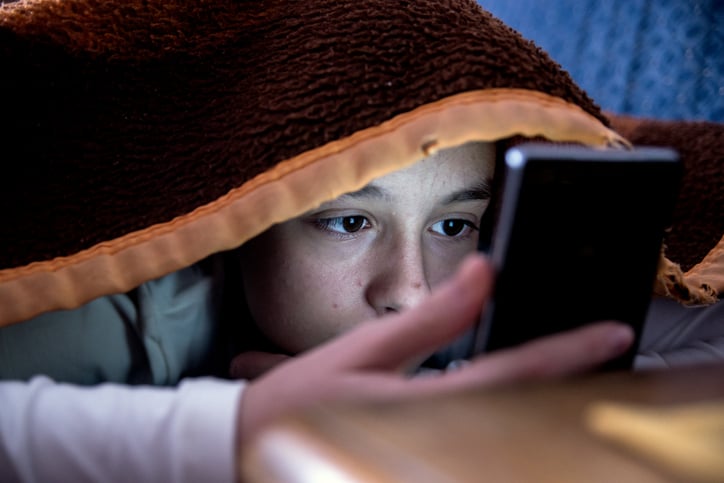How to Recognize, Prevent, and Stop Bullying of Autistic* Children
Bullying of kids with autism spectrum disorder (ASD) is a major problem in our schools. Recent research shows that 46% of kids with autism in middle and high school were victims of bullying, and other studies show that approximately 70% of elementary-age autistic children who were in inclusive classrooms were bullied.
I first witnessed my grandson being teased when he was 6 years old. After school, he always loved playing for a while at the playground in the park next door before going home. Going down the slide always took him several minutes sitting at the top and muttering to himself before he dared to slide down. One day, I heard another first grader who was waiting for his turn behind him calling him “stupid” before he pushed him down. My grandson ran to me scared, distraught, and in tears.
Through the years, there have been other times he was teased and bullied. Just last year, at age 15, he came home from school upset and in a bad mood for several days in a row. When I asked what was going on and if something had happened at school, he replied, “I don’t know! Nothing!” After prodding some more, he was finally able to explain that some of the other kids in his class were “mean” to him. They called him names and teased him about his special interests, and tried to beat him up, which explained his broken lunchbox that got trampled in the scuffle.
What Makes Autistic Children Vulnerable to Bullying?
My grandson, like many kids with ASD, finds it hard to understand other kids’ tone of voice or body language, so when his enthusiastic chatting about his special interests resulted in eye rolls and exasperated grunts, he didn’t get the point, like most of us would, that it was time to stop talking or change the subject. At first, he didn’t even realize he was being bullied, and since he could not communicate his thoughts and feelings well, he ended up accidentally offending some of his classmates even more by bluntly and insistently telling them they were wrong. And things progressed from there.
The inability to recognize social cues, engaging in repetitive behavior, hypersensitivity to environmental stimuli, and social awkwardness of many autistic individuals make them ripe targets for bullies who hone in on differences and tend to enjoy aggravating their victims. Autistic kids often cannot verbally defend themselves either. They have a hard time problem-solving, and may not be able to find the right words to tell bullies to stop. Sadly, when this happens, persistent and undetected bullying can have serious emotional consequences and aggravate and contribute to their often already low self-esteem.

How Can We Recognize Bullying of Autistic Children?
It can be difficult to spot bullying in autistic children who are limited in speech or have a hard time communicating their feelings. This is why it’s important to look for and recognize the signs as early as possible.
Physical signs, such as unexplained bruises, cuts, scratches, or missing belongings are easier to detect, but there can also be hidden behavioral and emotional markers. Emotional signs can include excessive crying, increased anger or aggression, mood swings, anxiety, withdrawal, stammering, and not wanting to talk about what is wrong. When you notice any of these signs, or if a child or student becomes more aggressive, suddenly dislikes school when they previously loved it, starts doing poorly at school, or is scared to get on the bus or walk home, it’s time to investigate.
As difficult as this can be when there are communication deficits, it's critical to find out what is going on and to address any issues as quickly as possible. Ask open-ended questions, and for children with limited speech, ask them to draw pictures or point to pictures to show you what is bothering them.
Emotion cards can also be helpful. Show the child or student a picture card of a happy, sad, and angry face, say the name of an activity, and ask them to choose the picture that shows how they were feeling at that time. You can repeat this for activities at different times during the day.

STAGES® Learning has these great Emotion Cards to help with this along with a free download version to start with!
How Can We Prevent Bullying of Autistic Children?
Over the years, I have found, and research shows, that the most powerful tool to combat bullying and increase positive social interactions between children with autism and their peers is to educate the typically developing peers with clear, accurate, and straightforward information about autism.
Many children don’t understand why autistic children act the way they do. Once informed, they often adopt a more compassionate perspective toward those with diffabilities and can become instrumental in preventing and intervening when one of their peers is bullied. More than 50% of bullying situations stop when someone intervenes.
Resources to Teach Neurodiversity
There are some great educational resources available to teach neurodiversity:
The Organization for Autism Research (OAS) created the Kit for Kids program for Kindergarten up to 8th-grade students, which includes videos, online read-along stories, tip sheets, worksheets, and a quiz. It’s a great tool for the inclusion classroom, and what better time could there be to find out What’s Up With Nick? than at the beginning of the school year?
Sesame Street also has some great resources available. They introduced Julia, a 4-year-old with Autism in their 2015 Sesame Street and Autism: See Amazing in All Children initiative. Besides video clips, you can download their free lesson plan and coloring pages. This is a great way to introduce and teach younger children about autism.
More Practical Steps to Prevent Bullying
Besides providing positive information about autism and talking with children about why it is wrong to bully or mistreat others, there are some additional practical steps you can take to prevent children from being bullied.
Provide close supervision of children who are at risk for bullying, especially during lunch and recess. You can also create a “buddy system” to walk an at-risk autistic child to and from classes, recess, etc., and encourage the child not to bring valuables or money to school.
You may want to set up a safe location for at-risk children to eat their lunch, such as a special supervised place in the cafeteria, library, or club area. You may also want to provide a safe place for children to go to and a staff member they trust whom they can report to if there is trouble.

How Can We Help Stop Bullying of Autistic Children?
Teachers are often the first line of defense when bullying occurs during the school day. You will either witness it firsthand or hear about it from the affected child or other students. Most schools already have procedures in place, so always follow the rules for stopping, addressing, and reporting bullying behavior.
If there is no formal process in place and you witness a bullying incident, step in the middle of a situation and stop it. Communicate the rules that are being broken, such as “keep hands and feet to yourself” and “no insults allowed” and take the bullied student to a safe private place to provide support and discuss what happened.
When an autistic child makes a report, no matter how unclear the communication or explanation may be, always validate their feelings. Minimizing or dismissing the situation can be very damaging to an autistic child or student who is already struggling to verbalize what happened. Instead, reassure them that reporting is not “tattling” and encourage the bullied child to talk to you, which will help them know you are concerned and believe them. Then speak with other children who witnessed the situation and calmly talk about what happened.
Once you have all the facts, meet with the one or ones who were responsible for the bullying and encourage an apology. Do not insist the two parties “make up” on the spot without speaking with the bully first. They also need help, and explaining to them why what they did was wrong will encourage a sincere apology and hopefully keep it from happening again.
How Can We Support the Bullied Autistic Child?
After an autistic child experiences bullying, it’s important to follow up and provide support. Each autistic child has unique needs, and the type of help they require will vary. In the case of my grandson, teaching social skills, learning to talk less and listen more, and how to react to bullying were important aspects that needed to be covered. I am happy to report he’s improved tremendously and those bullying incidents are much less frequent now. Finding the areas your child or student needs help in can have the same positive effect, and may even help them build some friendships where once there was animosity.
The bullying of autistic individuals is a real and present problem in our schools today, but by educating about autism, teaching neurodiversity, and providing support, bullying can often be recognized, prevented, and stopped on its track.
For other resources, check out this Bullying Prevention Resource Guide, developed to help students, teachers, and parents understand why bullying happens and what they can do to help stop it.
See also our article on spotting and preventing cyberbullying: How to Spot and Prevent Cyberbullying Against Students With Autism

Ymkje Wideman-van der Laan
Ymkje Wideman-van der Laan is an author, public speaker, and Certified Autism Resource Specialist from the Netherlands. After working abroad as a teacher and humanitarian for 25 years, she moved to the US in 2006 and assumed the care of her then 6-month-old grandson, Logan. There were signs of autism at an early age, and the diagnosis became official in 2009. She has been his advocate and passionate about promoting autism awareness and acceptance ever since. Logan is the inspiration behind the Autism Is...? (tinyurl.com/5aj73ydd) series of children’s books she initially wrote for him and later published. Ymkje currently lives in California with her now 15-year-old grandson, and besides writing, presents autism training workshops for early childhood educators, parents, and caregivers. You can read more about her story in her newly released book, Autism on a Shoestring Budget, [Early] Intervention Made Easier (https://tinyurl.com/ysxhxbmf). For more information, you can visit www.autism-is.com, www.facebook.com/AutismIs, and/or contact her at autismisbooks@gmail.com.




